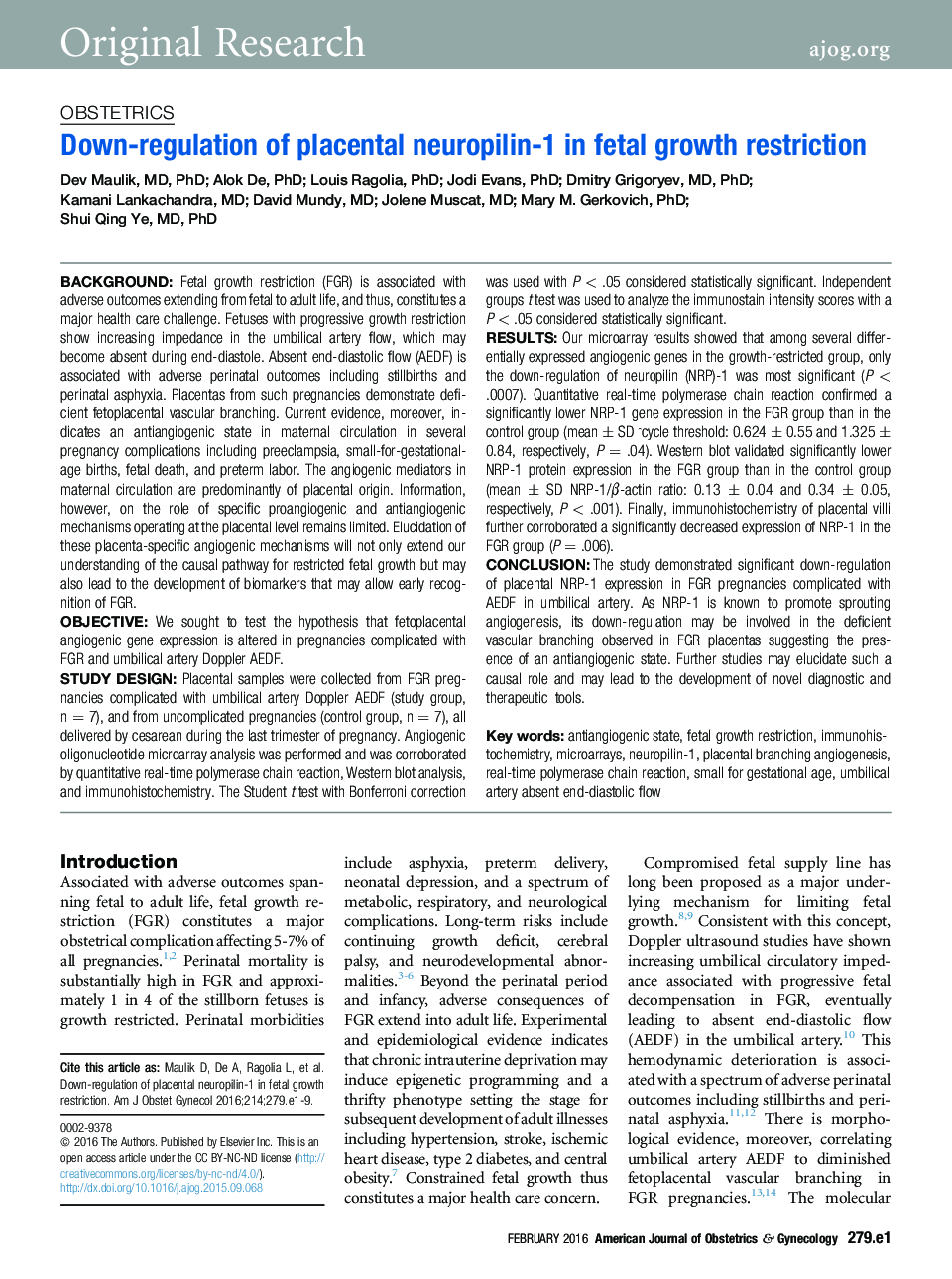| Article ID | Journal | Published Year | Pages | File Type |
|---|---|---|---|---|
| 6145014 | American Journal of Obstetrics and Gynecology | 2016 | 9 Pages |
BackgroundFetal growth restriction (FGR) is associated with adverse outcomes extending from fetal to adult life, and thus, constitutes a major health care challenge. Fetuses with progressive growth restriction show increasing impedance in the umbilical artery flow, which may become absent during end-diastole. Absent end-diastolic flow (AEDF) is associated with adverse perinatal outcomes including stillbirths and perinatal asphyxia. Placentas from such pregnancies demonstrate deficient fetoplacental vascular branching. Current evidence, moreover, indicates an antiangiogenic state in maternal circulation in several pregnancy complications including preeclampsia, small-for-gestational-age births, fetal death, and preterm labor. The angiogenic mediators in maternal circulation are predominantly of placental origin. Information, however, on the role of specific proangiogenic and antiangiogenic mechanisms operating at the placental level remains limited. Elucidation of these placenta-specific angiogenic mechanisms will not only extend our understanding of the causal pathway for restricted fetal growth but may also lead to the development of biomarkers that may allow early recognition of FGR.ObjectiveWe sought to test the hypothesis that fetoplacental angiogenic gene expression is altered in pregnancies complicated with FGR and umbilical artery Doppler AEDF.Study DesignPlacental samples were collected from FGR pregnancies complicated with umbilical artery Doppler AEDF (study group, n = 7), and from uncomplicated pregnancies (control group, n = 7), all delivered by cesarean during the last trimester of pregnancy. Angiogenic oligonucleotide microarray analysis was performed and was corroborated by quantitative real-time polymerase chain reaction, Western blot analysis, and immunohistochemistry. The Student t test with Bonferroni correction was used with P < .05 considered statistically significant. Independent groups t test was used to analyze the immunostain intensity scores with a P < .05 considered statistically significant.ResultsOur microarray results showed that among several differentially expressed angiogenic genes in the growth-restricted group, only the down-regulation of neuropilin (NRP)-1 was most significant (P < .0007). Quantitative real-time polymerase chain reaction confirmed a significantly lower NRP-1 gene expression in the FGR group than in the control group (mean ± SD Ëcycle threshold: 0.624 ± 0.55 and 1.325 ± 0.84, respectively, P = .04). Western blot validated significantly lower NRP-1 protein expression in the FGR group than in the control group (mean ± SD NRP-1/β-actin ratio: 0.13 ± 0.04 and 0.34 ± 0.05, respectively, P < .001). Finally, immunohistochemistry of placental villi further corroborated a significantly decreased expression of NRP-1 in the FGR group (P = .006).ConclusionThe study demonstrated significant down-regulation of placental NRP-1 expression in FGR pregnancies complicated with AEDF in umbilical artery. As NRP-1 is known to promote sprouting angiogenesis, its down-regulation may be involved in the deficient vascular branching observed in FGR placentas suggesting the presence of an antiangiogenic state. Further studies may elucidate such a causal role and may lead to the development of novel diagnostic and therapeutic tools.
